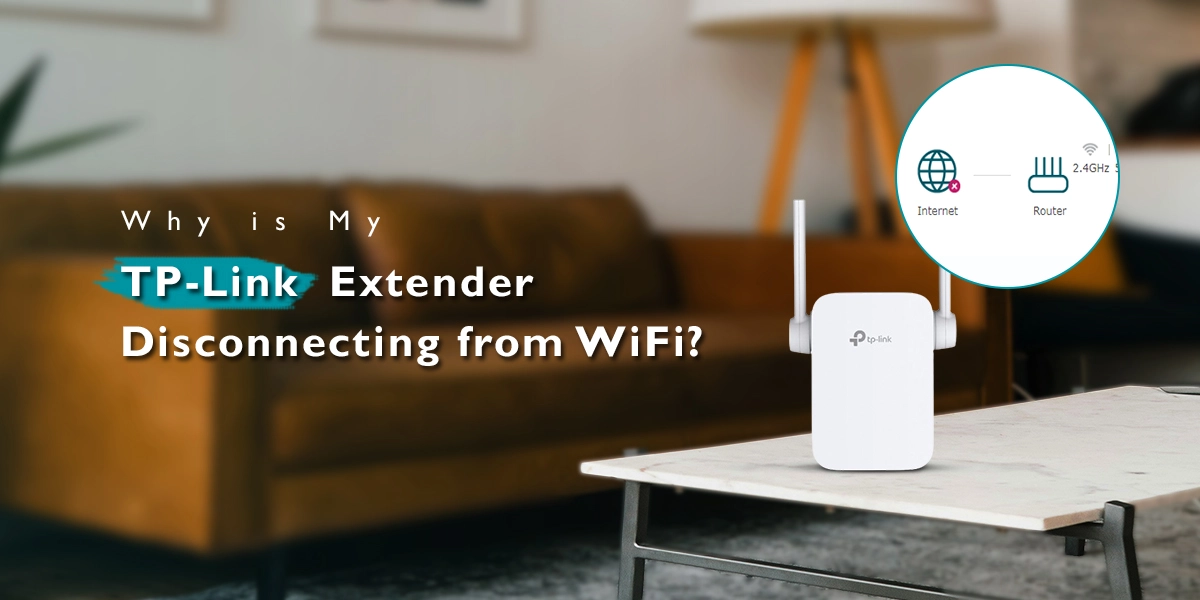
Why is My TP-Link Extender Disconnecting from WiFi?
Looking to increase the intensity and range of WiFi signals at homes and offices TP-Link extenders are a popular option. It can be annoying to deal with problems like frequent disconnections. In this blog post, we’ll look at a few typical causes of TP-Link extender disconnecting from WiFi and provide ways to assist you in fixing the problem.
Interference from Other Devices:
- Interference from other electronic devices may be the main cause of your TP-Link extender’s WiFi disconnections.
- Your WiFi signal can be interfered with by other appliances and even with the nearby WiFi networks, which might cause disconnections.
- Try moving your extender to a new area, away from these possible sources of interference, to help reduce this problem.
- To sustain a steady connection, ensure your extender is positioned at a suitable distance from your router.
Firmware Issues:
- Your TP-Link extension may experience connectivity issues due to outdated firmware.
- Your extender can trouble you in keeping a steady connection to your WiFi network if the firmware is not updated.
- Visit the tp-link wifi extender setup website to learn how to connect Wi-Fi extender to see if there are any firmware upgrades for your particular extender model.
- This should fix the issue.
- Resolve the disconnection issue by downloading and installing the most recent firmware version with the help of the given instructions.
Congestion in the Network:
- When several devices vie for the same WiFi network’s bandwidth, network congestion results, which causes disconnections and slowdowns.
- Validate that the tp-link extender wifi setup has been done accurately.
- Especially during busy times, having a lot of devices connected to your WiFi network at once can overload your TP-Link extender and cause it to disconnect.
- Limiting the number of connected devices or switching to a higher-speed internet plan with more bandwidth are two ways to reduce network congestion.
- To allocate bandwidth more effectively, you can change your router’s Quality of Service (QoS) settings and give priority to your most important devices.
Weak Signal Strength or Interference
- Weak signal strength or interference can reduce the intensity of the WiFi signal that your TP-Link extension receives, which results in frequent disconnections.
- Move your extension closer to your router in a central area to boost signal strength and lessen interference.
- Keep the extender away from heavy construction materials or big metal items that could interfere with or obstruct the WiFi connection.
- Try various positioning choices to determine the best place for stability and optimum signal coverage.
Problems with DHCP Configuration:
- Your network’s devices are automatically assigned IP addresses using the DHCP
- WiFi disconnections from your TP-Link extension may occur due to misconfigurations or conflicts in the DHCP settings.
- Check that DHCP is enabled and set up properly by logging into the web-based administration interface of your extender to solve DHCP-related issues.
- Ensure that your extender and router are not assigned conflicting IP addresses or have mismatched subnets.
- To avoid connectivity issues, consider manually assigning static IP addresses to your devices or, if necessary, trying to renew the DHCP lease.
Power Management Settings:
- Certain TP-Link extenders may disconnect from WiFi if left idle for a long time.
- Although these features contribute to energy conservation, they may inadvertently disrupt your WiFi connection.
- Through the management interface, examine the settings of your extender and disable or modify the power management settings to keep it from going into power-saving mode.
- If you want to guarantee that your house or office has constant WiFi coverage, keep your extender always powered on.
Conclusion
It can be annoying if your TP-Link extender disconnects frequently, but you can fix the problem by figuring out what’s causing it and putting the right fixes in place. You can make sure that all of your devices have a steady and dependable WiFi connection by taking care of typical problems including interference, out-of-date firmware, network congestion, signal strength, DHCP setup, and power management settings. If you’ve attempted troubleshooting but the issues persist, connect to TP-Link support for more help. You may have flawless WiFi coverage and continuous connectivity across your house and office.